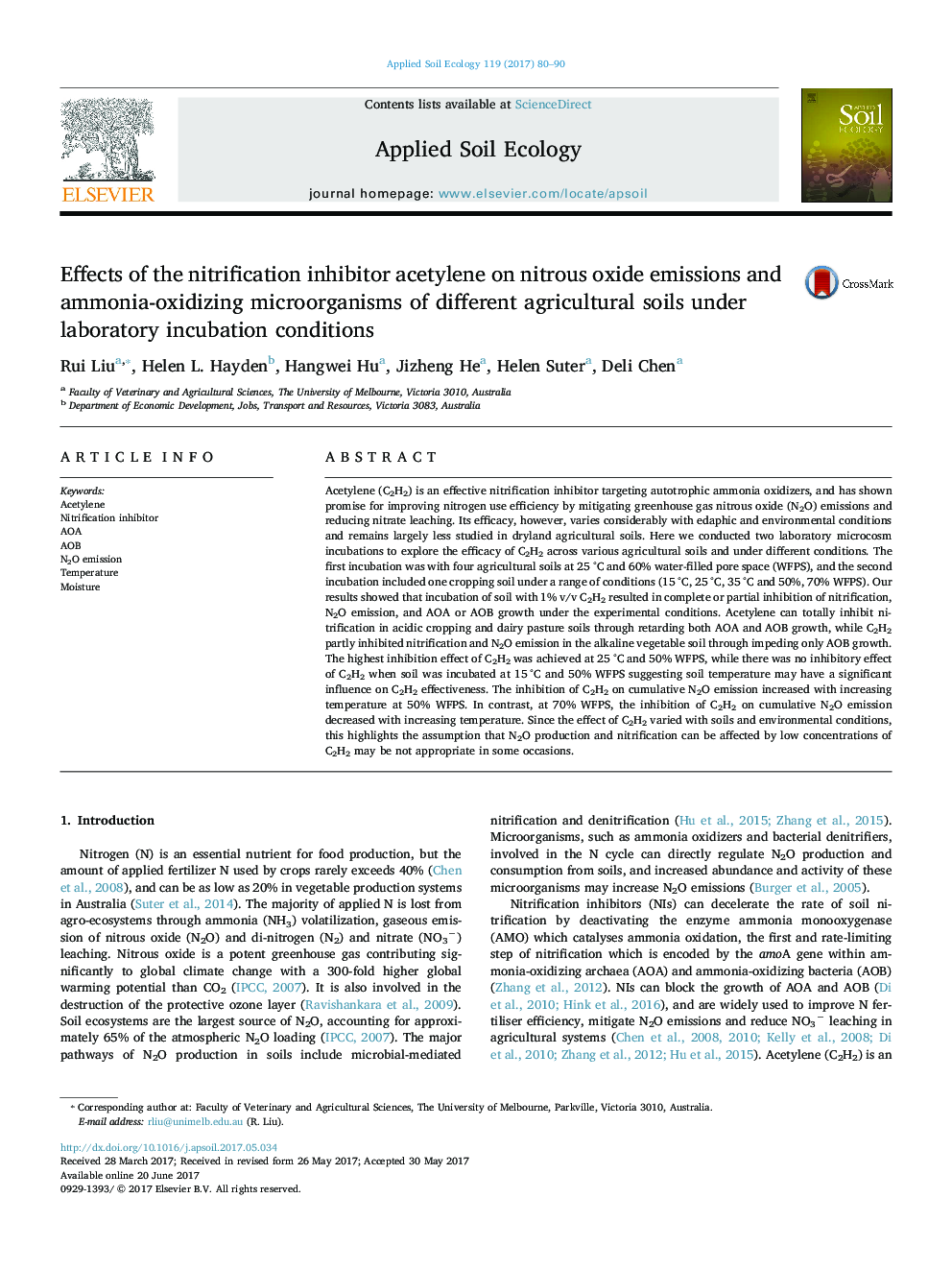| کد مقاله | کد نشریه | سال انتشار | مقاله انگلیسی | نسخه تمام متن |
|---|---|---|---|---|
| 5742617 | 1617765 | 2017 | 11 صفحه PDF | دانلود رایگان |
- Laboratory microcosm incubations were conducted to explore the efficacy of C2H2 under different conditions.
- Soil pH, C content, texture, temperature, moisture and land use might be important factors affecting C2H2 efficiency.
- The various inhibitory effects were linked to different responses of the ammonia oxidizers to C2H2.
- For better use of C2H2 it is important to understand that this will depend on the conditions present.
Acetylene (C2H2) is an effective nitrification inhibitor targeting autotrophic ammonia oxidizers, and has shown promise for improving nitrogen use efficiency by mitigating greenhouse gas nitrous oxide (N2O) emissions and reducing nitrate leaching. Its efficacy, however, varies considerably with edaphic and environmental conditions and remains largely less studied in dryland agricultural soils. Here we conducted two laboratory microcosm incubations to explore the efficacy of C2H2 across various agricultural soils and under different conditions. The first incubation was with four agricultural soils at 25 °C and 60% water-filled pore space (WFPS), and the second incubation included one cropping soil under a range of conditions (15 °C, 25 °C, 35 °C and 50%, 70% WFPS). Our results showed that incubation of soil with 1% v/v C2H2 resulted in complete or partial inhibition of nitrification, N2O emission, and AOA or AOB growth under the experimental conditions. Acetylene can totally inhibit nitrification in acidic cropping and dairy pasture soils through retarding both AOA and AOB growth, while C2H2 partly inhibited nitrification and N2O emission in the alkaline vegetable soil through impeding only AOB growth. The highest inhibition effect of C2H2 was achieved at 25 °C and 50% WFPS, while there was no inhibitory effect of C2H2 when soil was incubated at 15 °C and 50% WFPS suggesting soil temperature may have a significant influence on C2H2 effectiveness. The inhibition of C2H2 on cumulative N2O emission increased with increasing temperature at 50% WFPS. In contrast, at 70% WFPS, the inhibition of C2H2 on cumulative N2O emission decreased with increasing temperature. Since the effect of C2H2 varied with soils and environmental conditions, this highlights the assumption that N2O production and nitrification can be affected by low concentrations of C2H2 may be not appropriate in some occasions.
Journal: Applied Soil Ecology - Volume 119, October 2017, Pages 80-90
